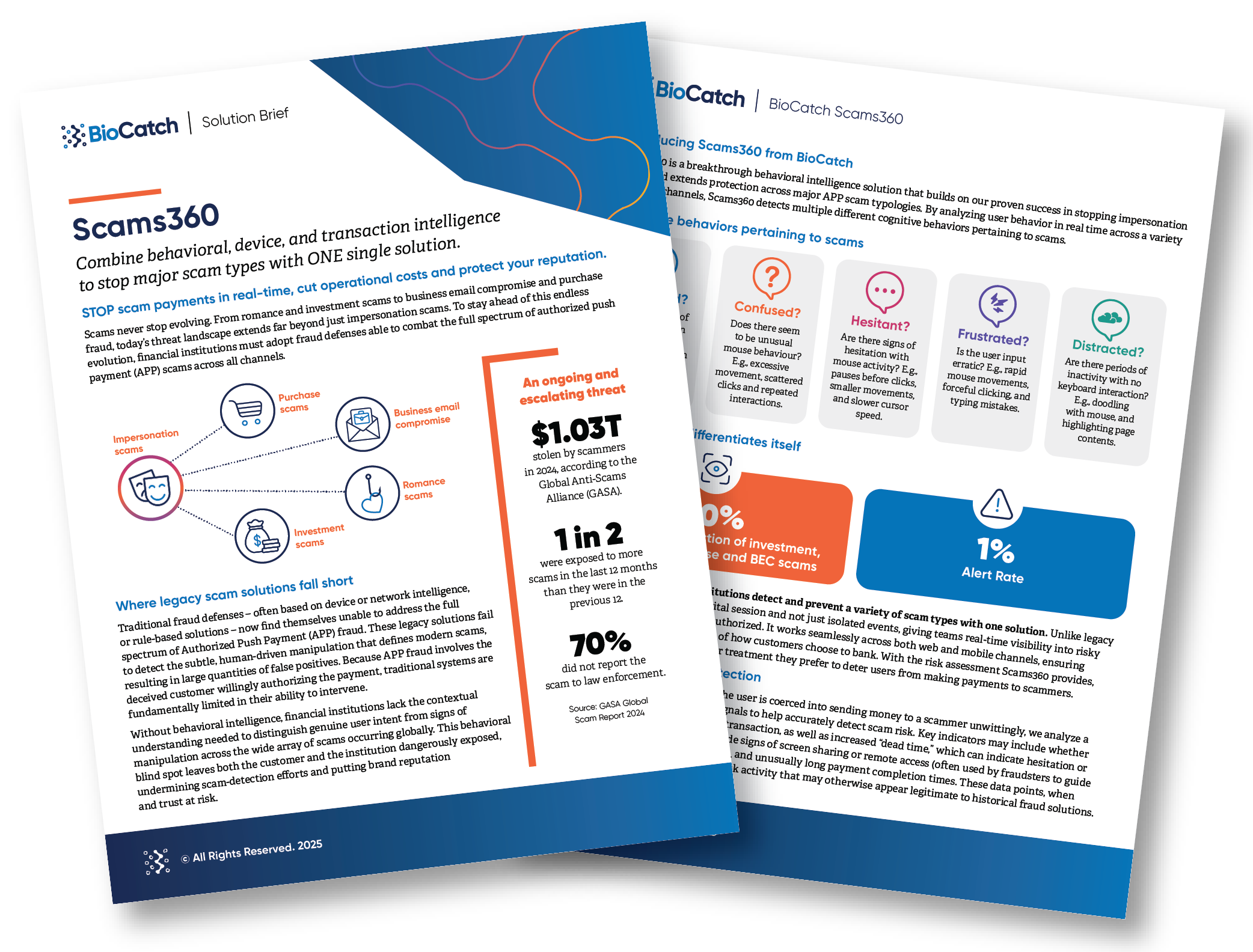Your customer can't always
spot the scam.
BioCatch can.
In the age of GenAI, BioCatch recognizes that detecting today’s diverse scam types requires more than simply monitoring transactional data. That’s why BioCatch solutions also analyze real-time user behaviour to uncover subtle signs of manipulation - helping financial institutions prevent a wide range of scams, including impersonation, investment, romance, business email compromise (BEC), purchase scams, and more.
Combine behavioral, transactional and
device intelligence to stop scams
In the age of GenAI, BioCatch recognizes that detecting today’s diverse scam types requires deep evaluation of fine-grained user behavioral patterns. That’s why BioCatch solutions analyze real-time micro-behaviors in user sessions to uncover subtle signs of manipulation - helping financial institutions prevent a wide range of scams, including impersonation, investment, romance, business email compromise (BEC), purchase scams, and more.
Spotting the signs of an investment scam.
Financial scams spare no one - affecting people of all ages, backgrounds. Research shows that even the most tech-savvy individuals are often among the most frequent victims. Transaction and Behavioral intelligence offer powerful protection across the scam spectrum, including threats like investment scams.
Fighting scams,
delivering results.
As scammers evolve their tactics, fraud prevention must evolve even faster. BioCatch empowers financial institutions to stay ahead and detect a wider range of scams in real time with a single, unified solution - stopping fraud before the damage is done.
See what our customers are
saying about BioCatch.
Proven results from our customers:
$100M
in scam payments prevented by one regional bank in the U.S. in 2024
67%
decline in social engineering scam losses within months of deployment at a top LATAM bank
8x
ROI achieved by a top-tier bank in EMEA, with a 70% reduction in scam losses totaling more than €4 million annually
$30M
protected per year at a leading Australian bank through BioCatch’s advanced scam prevention solution



